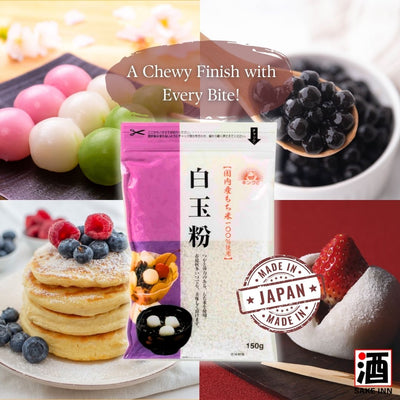How to read Sake Labels
Reading sake labels used to be difficult.
Unless you know how to read Japanese Kanji, it can be challenging to understand the sea of information on the labels. However, today's technology has improved in leaps, making it easier than ever to translate the labels (Thanks, Google Translate).
 A bottle of the Amanoto Junkara Junmai Sake, 720ml.
A bottle of the Amanoto Junkara Junmai Sake, 720ml.
Even though technology has made it easier to read labels, it does not help us to understand more about the bottle of sake before your eyes. In this post, let us take a look at interpreting sake labels!
Sake breweries have their preferences on the information they wish to include on their labels. That said, there are some common terms that are present in most, if not all bottles of sake.
What's on my sake's front label?

Sake Name
This is almost always the most prominent information, displayed on the front label. While not always practiced, some sake may be named after their brewery.
Sake Grade
Sake are classified into different categories depending on the Rice Polishing Ratio, and if alcohol was added.
Rice Polishing Ratio 精米步合
Sake Rice are polished to remove impurities, and the rice polishing ratio tells you the percentage of rice that is left after polishing. A lower ratio means more impurities are removed, leading to a refined, clean, lighter-bodied sake. Daiginjyo Sake has been polished the most, followed by Ginjyo, Junmai, and Honjyozo. Futsu-shu, otherwise known as table sake, is brewed with non-premium rice that has not been milled to the average 30% polish rate. There are certain legal requirements for the Rice Polishing Ratio for each grade of sake, and you can find these information on our Sake Guide: Basics.
Do note that a lower polishing ratio is not synonymous with how you'll enjoy your sake! We recommend that you try out different sake from different grades to find one that suits your taste.
Has alcohol been added to the sake?
Sake can be split into 2 broad categories - junmai (純米), and non-junmai.
Junmai (純米) sake are brewed without adding any distilled alcohol. These sake tend to have a rich, full-bodied profile. It is usually enjoyed with highly umami foods. Do look out for the words 純米 on your label! The grades of Junmai sake are:
- Junmai Daiginjyo (純米吟醸酒)
- Junmai Ginjyo (純米吟醸酒)
- Tokubetsu Junmai (特別純米)
- Junmai (純米)
Non-junmai sake have alcohol added to the sake brew. These sake usually have lighter bodies with fruity aromatics. Many people enjoy pairing them with light tasting foods. The grades of non-junmai sake are:
- Daiginjyo (大吟醸酒)
- Ginjyo (吟醸酒)
- Tokubetsu Honjyozo, and Honjyozo (本醸造)
We have written about the different grades of sake extensively in a separate blog post.
What's on my sake's back label?
Let's take a look at an actual sake label and decoding what each information means!
As mentioned previously, the information provided on labels are up to the breweries' discretion. Some sake breweries choose to have all their information on the front label, hence doing away with the back label. Hence, do take note that the information is not standardized across all sake breweries. However, the details that we will be covering are important information one should know!

Type of Rice used 原料米
The type of rice used matters. While there are over 100 types of sake rice, a.k.a Sakamai (Yes, sake rice are different from the rice you eat during your meals!), the commonly used Sakamai are Yamada Nishiki, Omachi, Gohyakuman-goku, and Miyama Nishiki.
Yamada Nishiki (山田錦) has a mellow, soft flavour that produces the most well-balanced sake rice. This may be why the rice is also known as the king of sake rice! It is widely used among the commonly used rice. Sake made with Yamada Nishiki tend to be savoury.
Omachi (雄町) produces sake rich in flavour. It is often used for variety because it gives complexity to the sake's taste.
Gohyakuman-goku (五百万石) produces smooth, clean flavoured sake. It is usually used to make dry sake.
Miyama Nishiki (美山錦) has a mellow, rounded flavour used to produce sake that are clean and fresh.

A few of the sake bottles we carry, according to the rice they are made with.
Production Date 製造年月
This is an important information! It is not a requirement to put an expiry date on the label, because there is no expiry date. However, the flavour of a bottle of unopened sake stored for long periods of time may not taste the same as it was when it was freshly brewed and bottled. Hence, it is generally followed that sake should be consumed within one year from the date of production. Look out for tips on how to properly store sake in a future article!
Sake Meter Value (SMV) 日本酒度
Just like wines, sake can be dry or sweet. This is represented by a Sake Meter Value, which can be thought of as a scale. A negative value indicates a sweet sake, and a positive value indicate a dry sake. You should read the SMV in conjunction with its acidity percentage (酸度, or san-do), if provided. Higher acidity sake tend to be drier and develop richer flavours. Lower acidity sake have light, gentle flavours.
Recommended Serving Temperature おすすめ温度
Your bottle of sake will taste different when drank at different temperatures. In certain bottles, the sake breweries have provided guidelines on the labels on how we can best enjoy that bottle of sake. However, try experimenting at different temperatures to find your sweet spot!
A chilled sake produces cleaner flavours, enhanced aroma, with a crisp and refreshing body. Warm sake have rich, savoury flavours and a fuller body. Hence, going back to the sake grade, we recommend that light bodied, refreshing sake like Daiginjyo and Ginjyo be served chilled to retain their flavours, while rich, full-bodied sake like Junmai type sake be served warm to enhance their umami notes.

Alcohol Content アルコール分
Freshly brewed sake have an alcohol percentage of 20% and above. These sake needs to be diluted before the bottling process. Hence, most sakes have an alcohol percentage ranging from 14% to 17%. Only genshu sake have alcohol content above 20% because it is not diluted.
---
Now that you understand the sake label, all you have to do is practice reading the Kanji words! Or better yet, save yourself the hassle by translating it with Google. Look out for the information discussed and you'll be closer to finding your ideal sake! Check out our other guides if you havent.




















Leave a comment